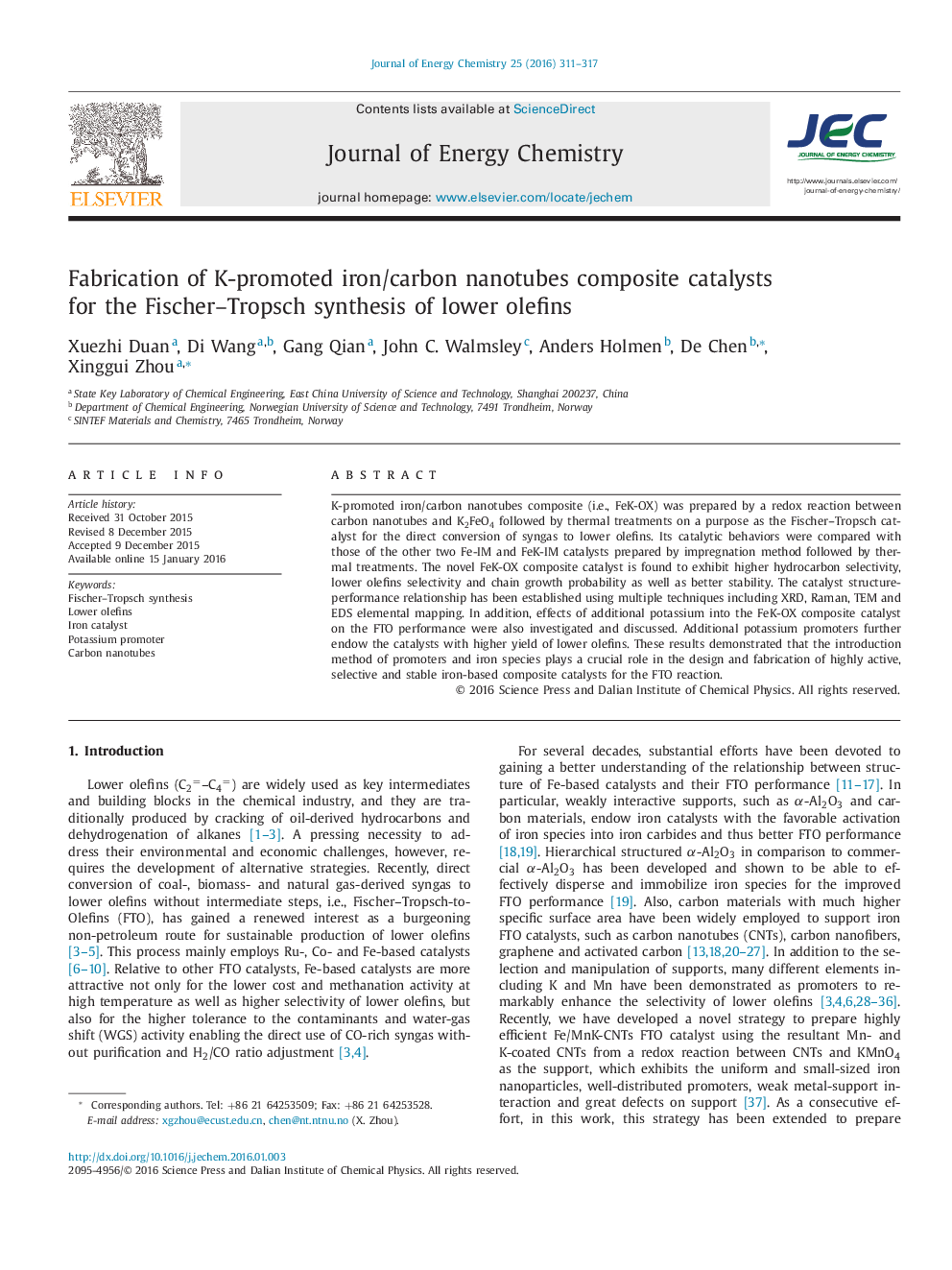| Article ID | Journal | Published Year | Pages | File Type |
|---|---|---|---|---|
| 63727 | Journal of Energy Chemistry | 2016 | 7 Pages |
K-promoted iron/carbon nanotubes composite (i.e., FeK-OX) was prepared by a redox reaction between carbon nanotubes and K2FeO4 followed by thermal treatments on a purpose as the Fischer–Tropsch catalyst for the direct conversion of syngas to lower olefins. Its catalytic behaviors were compared with those of the other two Fe-IM and FeK-IM catalysts prepared by impregnation method followed by thermal treatments. The novel FeK-OX composite catalyst is found to exhibit higher hydrocarbon selectivity, lower olefins selectivity and chain growth probability as well as better stability. The catalyst structure-performance relationship has been established using multiple techniques including XRD, Raman, TEM and EDS elemental mapping. In addition, effects of additional potassium into the FeK-OX composite catalyst on the FTO performance were also investigated and discussed. Additional potassium promoters further endow the catalysts with higher yield of lower olefins. These results demonstrated that the introduction method of promoters and iron species plays a crucial role in the design and fabrication of highly active, selective and stable iron-based composite catalysts for the FTO reaction.
Graphical abstract Additional potassium promoters into novel FeK-OX composite Fischer-Tropsch catalysts give rise to much higher yield of lower olefins.Figure optionsDownload full-size imageDownload as PowerPoint slide
